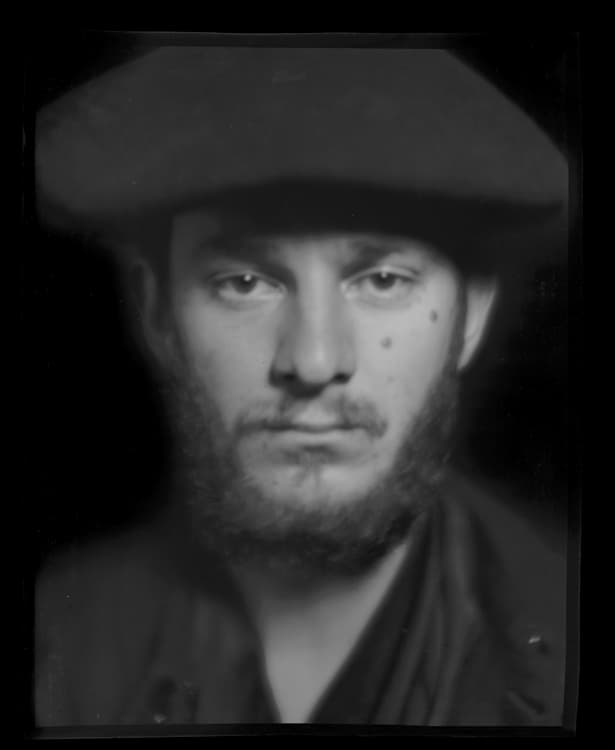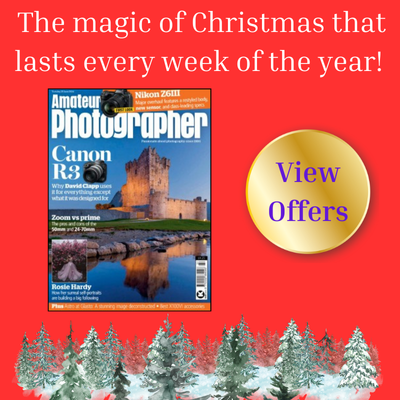Image: Self-portrait, early 1900s © Alvin Langdon Coburn/George Eastman House/Getty Images
At the height of his fame, Alvin Langdon Coburn was one of the most celebrated photographers of his generation. Although American, he was an important member of key photographic groups on both sides of the Atlantic and his photographs were admired and widely influential.
Photography was an important part of his life from his earliest years. He was born into a middle-class family in Boston, Massachusetts, in 1882, and his precocious talent for photography developed from the age of eight, when an uncle bought him a Kodak 5×4 camera as a birthday present. After the early death of his father, Coburn was brought up by his mother, who encouraged his photography. He became a skilled darkroom worker by the time he reached his teens.
This talent was further developed by his cousin, F Holland Day, who was himself an internationally famous photographer. Day saw his cousin’s potential and helped bring Coburn to public attention at the age of 17 by selecting seven of his prints for an important exhibition of American photography at the Royal Photographic Society’s London Salon in 1899.
Coburn’s work in this period was in the pictorialist style, one which had dominated photography since the mid-1880s. Pictorialists (among them Alfred Stieglitz and Edward Steichen) argued that photography was a creative art form, on a par with other visual arts including painting, and not simply a mechanical means of objectively recording the world. They used a wide variety of techniques to express emotion and mood, and were particularly known for producing atmospheric, soft-focus portraits and landscapes.
In 1900, Coburn’s early prints were seen by the English photographer Frederick Evans, who invited him to exhibit with fellow members of the Linked Ring. This was an important photographic society with prominent photographers, such as Frank Sutcliffe and Alfred Horsley Hinton, as fellow members.
Image: Tower Bridge, 1910 © SSPL/Getty Images
 Coburn’s first major commission came in 1904, when The Metropolitan Magazine asked him to do a series of portraits of major English writers. He photographed and became friends with playwright George Bernard Shaw, himself a keen photographer, who in 1906 declared that, ‘Mr Alvin Langdon Coburn is one of the most accomplished and sensitive art-photographers now living.’
Coburn’s first major commission came in 1904, when The Metropolitan Magazine asked him to do a series of portraits of major English writers. He photographed and became friends with playwright George Bernard Shaw, himself a keen photographer, who in 1906 declared that, ‘Mr Alvin Langdon Coburn is one of the most accomplished and sensitive art-photographers now living.’
Shaw’s friendship led to further introductions to famous people of the era and in the following years his sitters included American President Theodore Roosevelt, novelist Henry James, poet WB Yeats and sculptor Auguste Rodin. During this period he attended the London County School of Photo-Engraving and learned the photogravure printing process, at which he excelled. He subsequently set up two hand-operated printing presses in the studio at his London home.
As well as portraiture, Coburn was also exploring cityscapes and photographed famous London landmarks such as Trafalgar Square, Westminster Abbey and Tower Bridge in a romantic and impressionistic style. They were published in his book London (1909), which was followed by a book of New York scenes a year later. His most famous book, however, was a collection of his portraits, Men of Mark (1913).
Coburn left the USA permanently in 1912 and relocated to London before later settling in North Wales. While living in London, he became attracted to Vorticism, an offshoot of Cubism, which used bold lines and angular shapes to create abstract representations of subjects. This style was radically different from his previous work, but he believed photographers had become entrenched in familiar styles and should try something new.
In Photograms of the Year: The Annual Review of the World’s Pictorial Photographic Work (1916), Coburn wrote: ‘Why should not the camera throw off the shackles of conventional representation and attempt something fresh and untried?… Why, I ask you earnestly, need we go on making commonplace little exposures of subjects that may be sorted into groups of landscapes, portraits and figure studies? Think of the joy of doing something which it would be impossible to classify, or to tell which was the top and which the bottom!’
In 1917, he experimented with still-life photographs shot through a home-made device incorporating three mirrors and producing an effect similar to a kaleidoscope. The resulting Vortographs are considered the first consciously created abstract photographs ever made and were widely discussed at the time.
Although Coburn produced a follow-up to his earlier book of portraits called More Men of Mark (1921), by the 1920s his interest in photography was clearly beginning to wane. He had been initiated into freemasonry in 1919 and was becoming increasingly involved in researching and studying spiritual subjects such as mysticism and Druidism.

Image: Regent’s Canal, 1904 © SSPL/Getty Images
In 1930, his rejection of the artistic ambitions of his earlier life was symbolised by his destruction of around 15,000 of his negatives and the donation of his personal collection of historical photographs to the Royal Photographic Society. From then on, apart from some occasional forays into photography on his travels to Madeira in the 1950s, Coburn lived a quiet and contemplative life and rarely picked up a camera.
Ironically, the largest exhibition of his work, shown at Reading University in Berkshire in 1962, came more than 40 years after his last major work was published. He lived in North Wales until his death in 1966, at the age of 84.
In his autobiography, published in 1966, Coburn explained why he had given up his early dedication to photography. ‘I think I can justify this change of occupation on the ground of ultimate values,’ he wrote. ‘If you compare photography and religious mysticism as alternatives to which one should devote one’s life, can there be any doubt as to their respective importance?’
Biography
- 1882: Born on 11 June in Boston, Massachusetts, USA
- 1898: His cousin, photographer F Holland Day, encourages Coburn’s photographic career
- 1900: English photographer Frederick Evans invites Coburn to exhibit work with members of the prestigious Linked Ring group, which he later joins
- 1902: Begins studying with New York photographer Gertrude Käsebier and joins the Photo-Secession, the American counterpart to the Linked Ring. Opens a studio in New York City to exhibit his prints
- 1903: Given exhibition at the Camera Club of New York and one of his photographs is published in Alfred Stieglitz’s influential journal, Camera Work
- 1904: Travels to London with a commission to photograph famous subjects, including George Bernard Shaw and Henry James
- 1913: Coburn’s portraits published in the book Men of Mark
- 1917: Makes a series of abstract Vortographs, using mirrors to create abstract shapes
- 1920s: Becomes increasingly interested in mysticism, and he abandons the camera
- 1922: Publishes a second book of portraits, More Men of Mark
- 1930: Destroys almost 15,000 of his glass and film negatives
- 1966: His autobiography, edited by photo-historians Helmut and Alison Gernsheim, is published. Dies on 2 November at his home in Rhos-on-Sea, Denbighshire
Books
Several books on Coburn’s work are available both new and second-hand, including his autobiography, Alvin Langdon Coburn: Photographer (Faber, 1966) and Alvin Langdon Coburn: Symbolist Photographer by Mike Weaver (Aperture, 1986).
Websites
A good selection of Coburn’s photographs can be seen by searching the collection at www.photogravure.com. For more information on his techniques, visit www.notesonphotographs.org, and search for ‘Alvin Langdon Coburn’.









